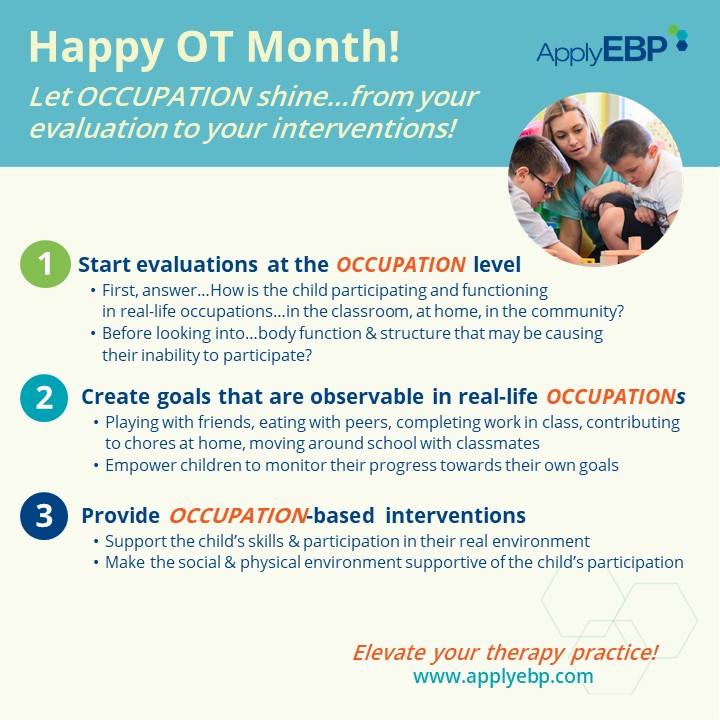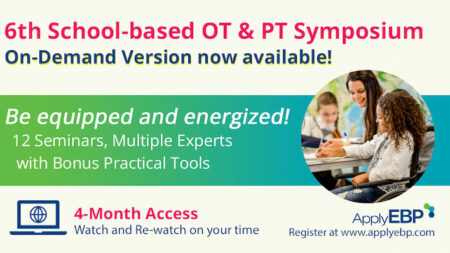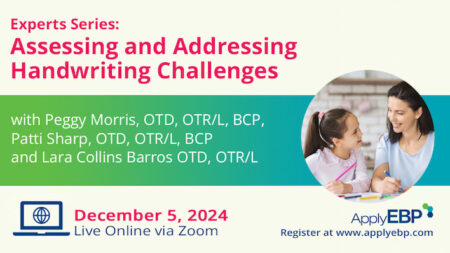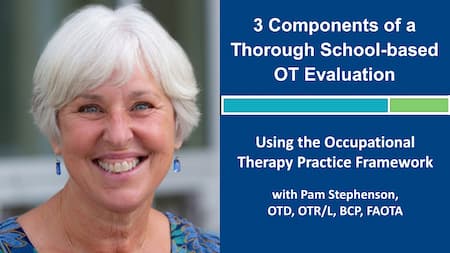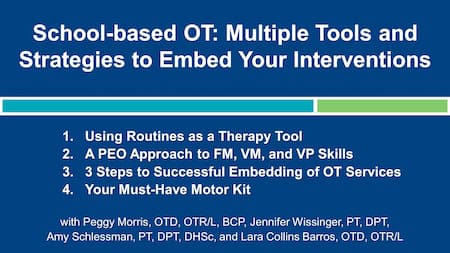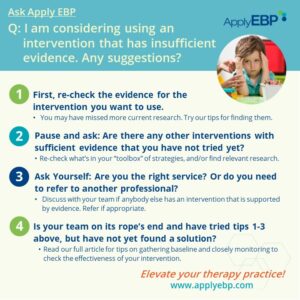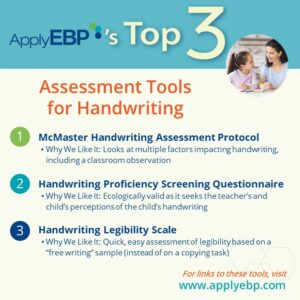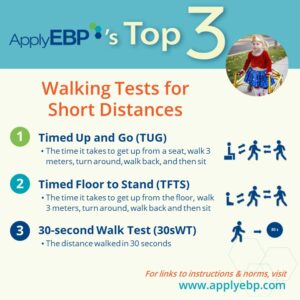Ask Apply EBP
Happy OT Month! Let Occupation Shine..from Your Evaluation to Your Interventions
Question: Any ideas for celebrating OT Month?
Yes, this OT Month let OCCUPATION shine from your evaluation to your interventions!
What better way to celebrate and honor the history of and the name “Occupational Therapy” than by highlighting Occupations this month and always.
1. Start Evaluations at the OCCUPATION Level
Grab one of your evaluation reports, maybe the most recent one. Review it and answer:
-
-
- What is highlighted by your evaluation report? Is it an occupation?
- How far down the report did you first encounter an assessment of the child’s occupation? Is it at the beginning of your report? In the middle? Or in the end?
- How many times did you mention an occupation versus how many times you mentioned your client’s impairments?
-
If you notice that you occupation is not the highlight, an assessment of the client’s occupation did not appear in the first quarter of the report, or impairments appeared more than occupations in your report, here are some suggestions for changes:
Start by exploring assessment tools for occupation to find one that fits your client’s profile. They usually include the words Occupation or Participation in their names.
-
-
- Some examples include Part 1 of the School Function Assessment (SFA), Canadian Occupational Performance Measure (COPM), or the Child Occupation Self-Assessment (COSA).
- Want to learn more about Occupation or Participation Level tests? Join Everything’s Measurable! ICF-based Approach to Pediatric OT and PT Evaluations and learn over 100 tools, including those for occupation.
-
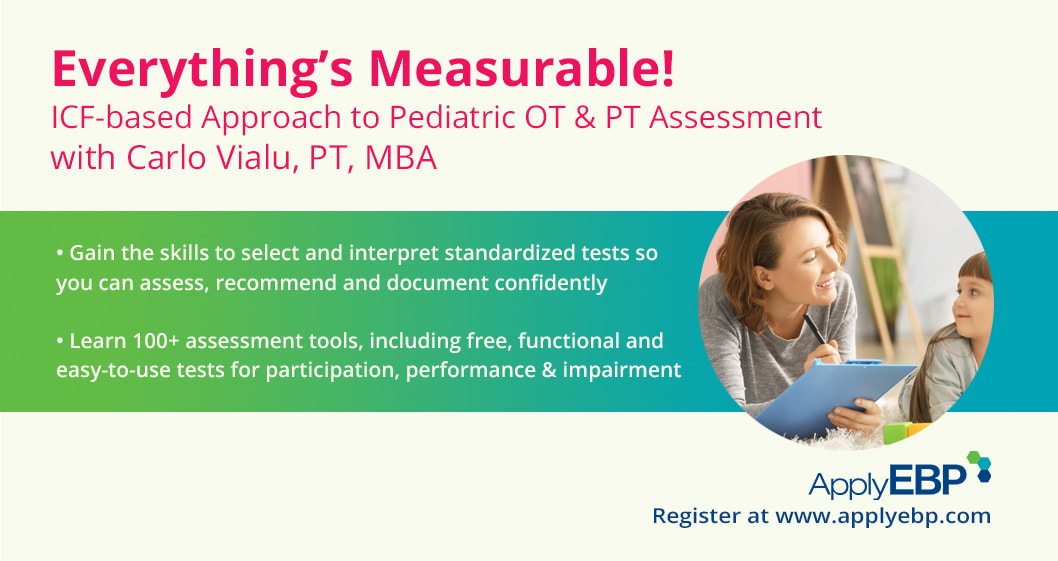
Now, use your chosen occupational assessment tool FIRST in your evaluation to answer the question…How is the child participating and functioning in real-life occupations…in the classroom, at home, and/or in the community? (depending on your work setting)
-
-
- If you are not used to doing this, you will be tempted to start with the VMI, the BOT-2, the SPM or other tests for body function and structure and performance. Resist the temptation! These other tests should not be the highlight of your report. Rather these tests should be used to help you figure out what may be contributing to the child’s difficulty in participating in meaningful occupations once you know where they are having difficulties participating.
- For example, use the SPM only after you find that the child is having problems participating in the classroom using the SFA, and you are hypothesizing that the child’s sensory processing may be contributing to it.
- Another example, use the BOT-2 after you find that the child is having problems completing tabletop work in class, and you are hypothesizing that the child’s motor coordination may be contributing to it, or you suspect that the child might probably have Developmental Coordination Disorder.
- If you are not used to doing this, you will be tempted to start with the VMI, the BOT-2, the SPM or other tests for body function and structure and performance. Resist the temptation! These other tests should not be the highlight of your report. Rather these tests should be used to help you figure out what may be contributing to the child’s difficulty in participating in meaningful occupations once you know where they are having difficulties participating.
-
When writing your report, make sure OCCUPATION is the highlight by:
-
-
- Mentioning it first and more often than impairments
- Relating all test results back to the child’s actual (not assumed) participation in occupations.
-
2. Create goals that are observable in real-life OCCUPATIONs
In the same way, grab a goal you have for your client and review it.
Is an occupation mentioned? If not, explore ways to change it to include real-life occupations. For example, if the current goal is “The child will perform a task with 3 steps”, can you change it to mention real-life occupations that may require 3 steps? “The child will be able to brush their teeth after eating a meal…” or “The child will be able to zip up her jacket prior to going to recess with her peers…”
If an occupation is mentioned, is occupation the highlight? If not, explore ways to make it the highlight. The easiest way to do it is by removing interventions or conditions that appear to be more of a highlight than the occupation itself.
For example, if the current goal is that “the child will be able to cross midline to be able to write a legible sentence with 5 words”, crossing midline is mentioned first and seems like the highlight. Would you be happy if the child can cross midline but not write 5-word sentences? Or, would you be happy if the child can write 5-word sentences but cannot do a cross-crawl (i.e., an exercise that shows crossing midline)? I would assume you would be happier with the second, and not so much the first. So remove crossing midline so that the focus is on writing.
Finally, add prepositions to indicate that it is occuring during the time of day that the occupation should be occuring occupation. For example, “the child will be able to complete a legible sentence with 5 words during writing time in class.” Note the 2 prepositions during and in to indicate that the skill is occuring when and where it is neeeded…that’s a try occupation!
Learn more goal-writing strategies with Creating Goals that are Easy to Monitor…and a Stress-free Companion Monitoring Tool.
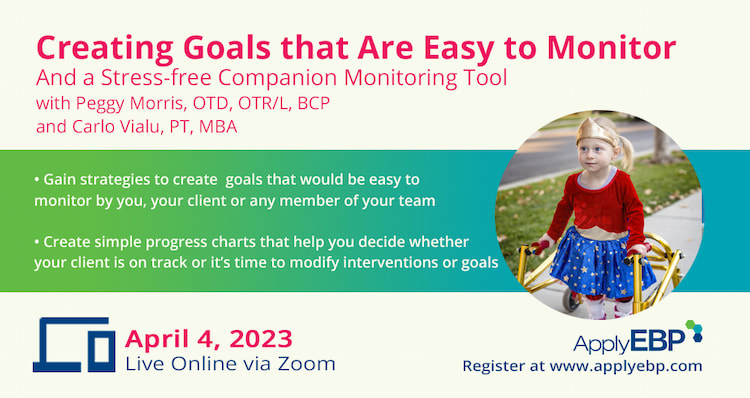
Provide OCCUPATION-based interventions
Support the child’s occupation when and where it is needed. Support eating during mealtime, social participation in recess, tabletop work in ELA or Math class. You might even find, for example, that while you are there for handwriting that there are other occupations that the child can benefit from your expertise. Or you may find that the reason why the child is successful in the “OT room” but not in the classroom is because of something in the environment or the way the task instructions are delivered in class that you can easily address.
Take the opportunity of being with your colleagues in the natural environment and reap these added benefits:
-
-
- Your colleagues’ better understanding of what Occupation means in occupational therapy, by having the opportunity to highlight and model different occupations that you can support the teacher in.
- Better carryover of your suggestions as they start to value it, seeing what you are doing is actually helping the child.
-
And when you are working with the child separate from his/her natural environment:
-
-
- Reflect on how much time you work on a meaningful occupation, versus other activities, such as preparatory activity, occupation-adjacent, or a motivating non-occupation activity. Are you spending less than 75% practicing an actual occupation? 50%? 25% or less? If it’s less than 75%, find some ways to increase it. This SeekFreaks article from Patti Sharp includes some great suggestions on how to do this.
- Bring some of the skill practice as soon as possible into the natural environment.
-
You are not used to delivering OT services in the classroom or other natural school environment? Read Karen Tartick‘s free article on SeekFreaks, Top 10 Gotta Be’s for Successful Integrated Services. Nedd more ideas for embeding? Join the Experts Series: Tools and Strategies for Embedding School-based OT and PT Services.
So are you ready to be known and understood as the OCCUPATIONal Therapist or OCCUPATIONal Therapy Assistant, not the “sensory therapist” or the “handwriting teacher”?
Go let OCCUPATION shine the way it should, from your evaluation to your interventions. Happy OT Month!
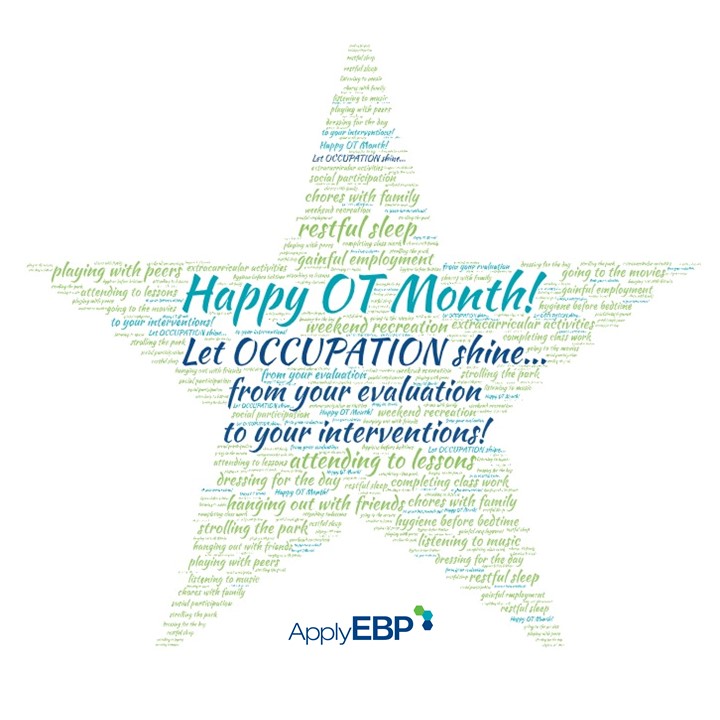
Find More Answers to Your Questions in Our...
Featured School
Symposium
6th Online School-based OT and PT Symposium - On-demand Version
- Watch and re-watch on your own time
- On-Demand Version
- OTs, OTAs, PTs and PTAs
- $399-449
Featured Live
Workshop
Assessing and Addressing Handwriting Challenges: Fall 2024
- December 5, 2024, 8:30 am - 3:30 pm Eastern Time
- Online via Zoom
- OTs, OTAs, & Educators
- $199-249
Featured On-Demand
Webinar
3 Components of a Thorough School-based OT Evaluation
Featured Webinar
Bundle
School-based OT: Embedded Interventions Bundle
Have a question?
Submit here…
*Clicking submit will send your question directly to our email inbox. Your name and email will let us know that your submission is real (not spam). We will not include these in our posts, unless you tell us to include your name. Please read our privacy policy here.
All infographics and videos on www.applyebp.com are intellectual properties of Apply EBP, LLC
You may use the infographics and videos for free for any non-commercial, educational purposes. Please cite the source as “Apply EBP, LLC” and a link to the source article. If you plan to use any infographic or video for commercial purposes (i.e., for profit), please email Carlo@applyebp.com to obtain a written permission. Permission can be granted on a case-by-case basis.

